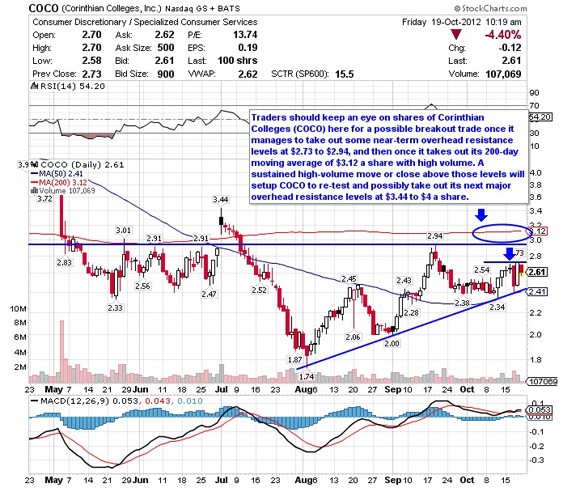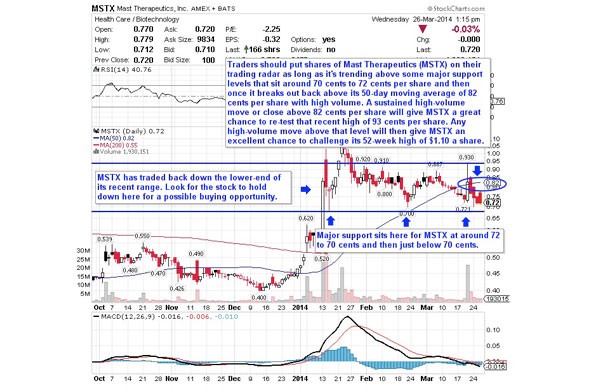The Importance of Trading Volume Technical Primer Stockpickr! Your Source for Stock Ideas
Post on: 22 Май, 2015 No Comment

By Jonas Elmerraji
Senior Contributor
04/07/11 — 08:16 AM EDT
BALTIMORE (Stockpickr ) — For technical traders. volume is a critical part of any stock’s trading behavior. A glimpse at a stock’s volume can give you major clues about a stock’s tradability, the probability of a successful trade, and the efficacy of a price move. But because interpreting volume numbers can be complicated, would-be traders ignore them all too often.
Today, we’ll take a brief look at the role volume plays in technical analysis — and how to put volume to work for your next trade.
Volume is simply the number of shares (or contracts, in the case of futures or options markets) of a security that trade hands over a set period of time. That definition is important; while many investors think of volume as directional, with volume on an up day indicating buying and volume on a down day indicating selling, any share that’s added to a day’s volume tally is the result of both a sale of stock and a purchase. One can’t happen without the other. Most financial Web sites give daily volume data, but trading platforms can distill volume by any interval that can be charted.
It’s important to remember that volume isn’t a metric that is comparable between stocks. While a stock’s trailing 52-week gains or profit margins may be comparable with other issues in its industry, its trading volume isn’t. Since arbitrary factors like shares outstanding and trading interest can significantly impact trading volume, it only makes sense to compare a stock’s volume against itself.
Most often, volume is depicted as a histogram below or behind the price chart. There are other, more complicated ways of looking at volume — we’ll explore those in a minute.
Volume as a Liquidity Criterion
Volume is an excellent indicator of a stock’s liquidity. That’s because a higher number of transactions means that buyers and sellers are able to agree on a transaction price, and the bid/ask spread is minimized. In practice, volume’s especially important in the case of options or small-cap stocks.
Why is liquidity such a big deal? Low liquidity means that it’s more difficult to enter and exit positions. Since all transactions require a buyer and a seller, traders who need to buy or liquidate a position get stuck paying market prices for their shares. In the case of buying a thinly traded stock, that market price is whatever the seller wants to take (the ask), which may be a big change from the last traded price. For high-volume stocks with tiny bid/ask spreads, however, the seller’s ask price isn’t far from the last quote.
That means picking up or selling off shares is “cheaper,” and it results in less slippage.
Volume as a Confirmation Tool
For technical analysts, volume is most useful as a confirmation tool. That means that volume levels suggest the importance of a technical move.
A breakout may be a trading signal, but a breakout on high volume is a much stronger one. That makes a lot of sense when you think about the fact that volume represents transactions in a stock; high volume on an upward move means that an increasing number of buyers are bidding up shares.
Of course, I mentioned earlier that volume isn’t directional and that for every buyer there must be a seller for a trade to occur. But when viewed in conjunction with price action, volume can tell traders about the strength of a move because of how new prices are made in the market. For a stock’s price to increase, sellers must decide that they want to ask for higher prices for a stock, and buyers must be willing to increase their bids to match them.
When that sort of trading takes place under high volume, it means that buyers’ demand is overwhelming sellers. It also means that there’s bullish conviction among traders.
For that reason, declining volume in an uptrend means that bullishness is waning (called a negative divergence) and that a break of the trend could be forthcoming. As a rule, increased volume is a necessary element of upward moves, but because a lack of demand can kill prices just as quickly as an excess of supply, it’s not a prerequisite for downward moves.
Interpreting Volume Data
There are a few different ways to interpret volume data. One involves looking at a regular chart and watching for trends in volume that confirm the moves taking place in price. Because the number of shares traded at a price is so important, charting methods have been developed to integrate the two. One, equivolume, charts bars (or candles. in the case of the chart below) whose widths are based on volumes traded for a stock.
Above: An equivolume chart of Apple .

As a result, wider bars represent stronger support or resistance levels, since they’re areas where a greater number of shares traded hands.
There are also a number of indicators that have been developed to try to interpret volume data. One of the most popular, known as on-balance volume, or OBV, is essentially a running tally of volume in which up-days are counted as positive and down days counted as negative. Inflection points in OBV gives traders an idea of where buyers or sellers have control of the market.
Most volume-driven indicators — including accumulation/distribution and all money flow indicators — show similar results, so it’s best for technicians to pick a preferred indicator rather than using many that will show similar signals.
At the end of the day, volume is an incredibly important piece of information that is inseparable from price action but is frequently not used to its full potential. That said, it’s important to remember that volume is a secondary indicator; while it’s incredibly useful to determine the importance of a move or the strength of a trend, it needs to be used alongside price action.
Next week, we’ll add to your technical repertoire with another primer that will bring you closer to implementing technical analysis for your portfolio.
— Written by Jonas Elmerraji in Baltimore.
RELATED LINKS:
>>Bullish Blue-Chip Technical Charts for April
>>Spotting a Reversal: Technical Primer
>>3 Stocks With Bullish Technical Setups
Jonas Elmerraji, based out of Baltimore, is the editor and portfolio manager of the Rhino Stock Report, a free investment advisory that returned 15% in 2008. He is a contributor to numerous financial outlets, including Forbes and Investopedia, and has been featured in Investor’s Business Daily, in Consumer’s Digest and on MSNBC.com.














